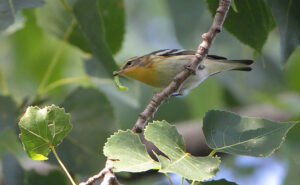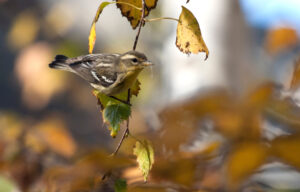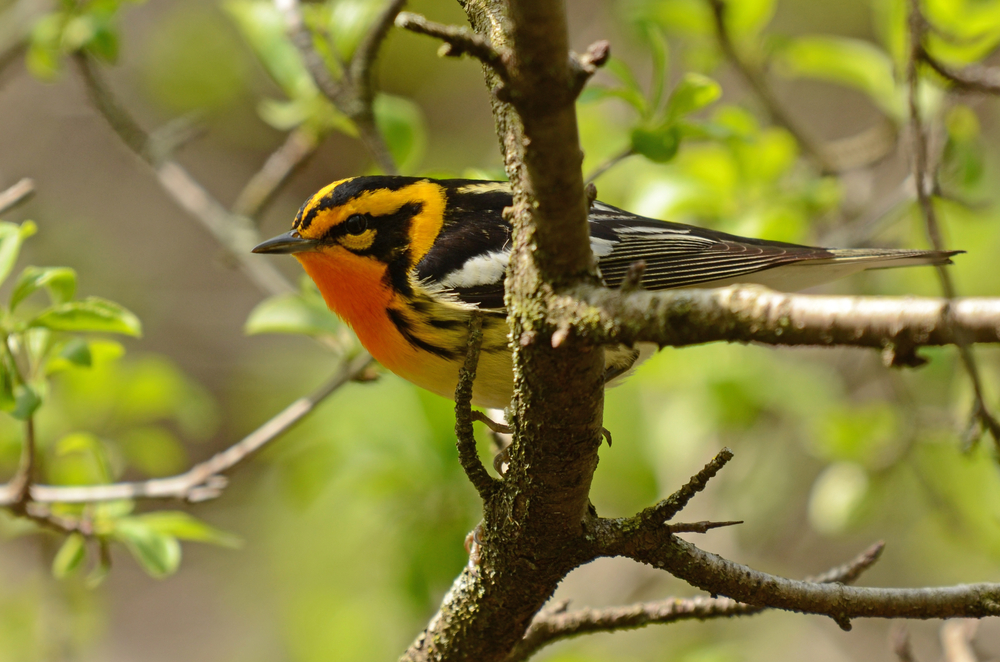Blackburnian Warbler, Setophaga fusca
Bill Rowe
Out of the millions of birds headed north through Missouri right now (as mentioned last week), a great many are going to their nesting grounds in the taiga—the great spruce-fir forests of Canada and the northernmost United States. Of these, the most colorfully diverse are the warblers, as exemplified by the adult male Blackburnian Warbler shown above, with its incandescent orange throat, bold black-and-yellow face pattern, and white-on-black wing patch. On its breeding grounds, the Blackburnian will sing, build a nest, and hunt for moth and butterfly larvae, all in the upper branches of the spruces. Here, on migration, it may be seen in oaks or maples instead, but it still likes to stay high up, and you may be craning your neck for a good look. As with so many birds, the male delivers a characteristic song on the breeding grounds, and it practices that song during migration—so it helps to spend time learning the songs of this and other warblers, in order to find them more readily and identify them more easily as they flit far above your head. The Blackburnian’s, in particular, consists of a series of high, thin notes that rise to a final pitch at one of the highest frequencies in any American bird song, about 10 kHz. (Needless to say, those notes are among the first to be lost by the more senior among us.) Directly to our north, as noted, this bird heads for the boreal forest, but farther east it will accept other forest types, and it actually nests at higher altitudes in the Appalachians down as far as Kentucky, Tennessee, and North Carolina, in stands of hemlock and in deciduous woods as well. For the winter, Blackburnians fly to Panama and northern South America: Colombia, Venezuela, and the Andean slopes of Peru and Ecuador.
IDENTIFICATION: The adult male is unmistakable when he pauses long enough to give you a look; the adult female is similar except for a throat that is bright yellow instead of fiery orange; and a young female in her first fall may show a pattern that is paler, more cream-and-gray. If in doubt, look for whitish stripes down the back between the wings, a mark shown by no other kind of warbler.
ST. LOUIS STATUS: A regular migrant, seen fairly often, but not too numerous and thus listed as “uncommon.” In spring, almost entirely limited to the month of May; in fall, mostly from late August to early October.
Learn more and listen to the songs and calls of Blackburnian Warblers here.


Adult female with typical prey
Photo Credit: Al Smith
Immature female; note white stripes on back




